#valley forge
Text
average rations in valley forge
#amrev#american revolution#history#valley forge#george washington#nathanael greene#marquis de lafayette#lafayette#alexander hamilton#hamilton#rave art
192 notes
·
View notes
Text
December 19th, 1777, the day George Washington marched his troops into Valley Forge!
Hello everyone! Today's the day George Washington and his army moved to the Valley Forge Encampment for the winter (except today may not be the day because while most sources claim it was the 19th a select few say it was the 18th also I live in the Southern Hemisphere and I'm not entirely sure what day it is for you North-folk). Also sorry for any bad quality, I'm writing this at 1:12 AM on a Wednesday and I have not slept since Sunday.

Anyway about Valley Forge:
George Washington and his soldiers moved into the Valley Forge encampment on the 19th of December, 1777. George Washington chose to stay at the Valley Forge for multiple reasons, number 1 being that it wasn't too far from the capital of Philadelphia, which at the time was being occupied by the British, and the Continentals had to make sure that they kept an eye on the redcoats because if they didn't then the redcoats could attack American citizens or take over random people's houses, something that they did rather frequently (think the Quartering Act), and the army wouldn't be there to fight back or wouldn't know that they were occupying a certain house. Also, they needed to know where the redcoats were in case they moved, because if they moved, they might be going off to battle and trying to do a surprise attack on the Continentals. Knowing where the British were made it so that surprise attacks couldn't be used against the Americans. + Valley Forge wasn't too close to the Philadelphia countryside, so the Army wouldn't bother the local farmers with the noise of thousands of soldiers training every day. And the Valley Forge was on high ground and surrounded by hills, so it'd be hard for the British to get to them.
About 11,000 soldiers and a few hundred of their wives, children, and friends made it to the Valley Forge, and if you're particularly observant, you may have noticed that in the image above, the soldiers aren't wearing any one uniform. This is because the Continental Army at this time was comprised of mainly little militia groups with their own distinct uniforms. Anyway, Valley Forge wasn't unenjoyable because of bad weather, but rather bad weather combined with a severe lack of supplies like shoes, shirts (really any clothing item), and food and drink. Washington estimated that nearly a third of his men didn't have shoes during the journey to Valley Forge, and quite a few of them didn't have a frock coat to protect them from the winter wind and rain. When they arrived at the camp, Washington gave orders to all of his men to build their own wooden huts and find some straw to use as bedding, as they didn't have enough blankets for everyone. Then Washington was informed by another senior officer that they had 25 barrels of flour and a little salt pork, and they were meant to somehow use that to feed the whole army. Washington wrote to Henry Laurens, the president of Congress at the time, about this issue. Washington and his aides-de-camp stayed in a two-story house made of stone, and Washington spent much of his time writing to Congress, asking for more supplies and defending himself against Congress' claims that he wasn't a good military leader and that he wanted total power, and he complained about the Conway Cabal (a group of three men who Congress decided to give as much power as the Commander-in-Chief). But outside of Washington's personal struggles, the Valley Forge encampment was all about training. When the Continentals were there, they trained for battle constantly and learned how to use bayonets properly, fight in a disciplined way, march in a near perfect straight line and execute commands quickly on the battle field.
Many generals helped George Washington during his struggle, both to show his competence and with his men. Lafayette got officers from Europe (mainly France and Poland) to help with the war; Henry Knox helped build defensive walls on the Valley Forge's hills to help the Continentals protect themselves against the British; Nathanael Greene and Anthony Wayne searched for farm animals from the country side; and probably most famously, Baron Frederich von Steuben taught the Americans all about fighting and took care of all of the training in fact he added some of his lessons into the Army's blue book and it was the official US military training manual for decades. Even Martha Washington helped by managing Washington's household, helping him with his letters to Congress, and bringing some cheer to the camp by entertaining the guests. By the spring of 1777, life at Valley Forge wasn't half bad. Washington figured out a way he could get enough supplies into camp, and everyone happily celebrated when they heard that France was officially their ally in the war. In June 1778 the Continentals happily marched out of the Valley Forge with heaps of new knowledge that they'd use to help them on the battlefield and eventually beat the British with.
#amrev#american revolution#american revolutionary war#american history#history#revolutionary war#valley forge#george washington#on this date#on this day#18th century#18th century america#revwar#military history
73 notes
·
View notes
Text
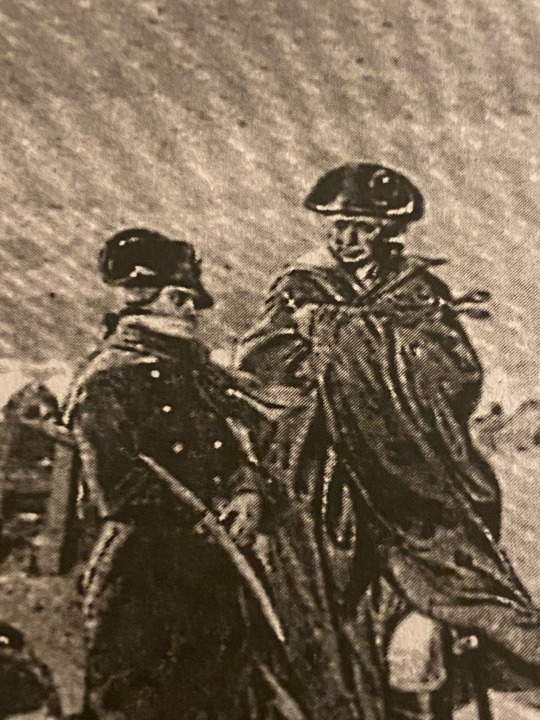
Lafayette spotted
67 notes
·
View notes
Text

Nick Anderson
* * * * *
LETTERS FROM AN AMERICAN
January 6, 2024
HEATHER COX RICHARDSON
JAN 7, 2024
Today, three years to the day after the January 6, 2021, attack on the U.S. Capitol to prevent the counting of the electoral ballots that would make Democrat Joe Biden president, officers from the Federal Bureau of Investigation arrested three fugitives wanted in connection with that attack.
Siblings Jonathan and Olivia Pollock, whose family owns Rapture Guns and Knives, described on its Facebook page as a “christian owned Gun and Knife store” in Lakeland, Florida, and Joseph Hutchinson III, who once worked there, are suspected of some of the worst violence of January 6. The FBI had offered a $30,000 reward for “Jonny” Pollock, while the other two had been arrested but removed their ankle bracelets in March 2023 and fled.
Family members of the fugitives and of other Lakeland residents arrested for their involvement in the January 6 attack on the Capitol insist their relatives are innocent, framed by a government eager to undermine their way of life. The Pollock family has gone so far as to erect a monument “in honor of the ones who lost their lives on January 6, 2021.”
But it does not honor the law enforcement officers who were killed or injured. It honors the insurrectionists: Ashli Babbitt, shot by a law enforcement officer as she tried to break into the House Chamber through a smashed window (her family today sued the government for $30 million for wrongful death), and three others, one who died of a stroke; one of a heart attack, and one of an amphetamine overdose.
The monument in Lakeland, Florida, is a stark contrast to the one President Biden visited yesterday in Pennsylvania. Valley Forge National Park is the site of the six-month winter encampment of the Continental Army in the hard winter of 1777–1778. After the British army captured the city of Philadelphia in September 1777, General George Washington settled 12,000 people of his army about 18 miles to the northwest.
There the army almost fell apart. Supply chains were broken as the British captured food or it spoiled in transit to the soldiers, and wartime inflation meant the Continental Congress did not appropriate enough money for food and clothing. Hunger and disease stalked the camp, but even worse was the lack of clothing. More than 1,000 soldiers died, and about eight or ten deserted every day. Washington warned the president of the Continental Congress that the men were close to mutiny.
Even if they didn’t quit, they weren’t very well organized for an army charged with resisting one of the greatest military forces on the globe. The different units had been trained with different field manuals, making it hard to coordinate movements, and a group of army officers were working with congressmen to replace Washington, complaining about how he was prosecuting the war.
By February 1778, though, things were falling into place. A delegation from the Continental Congress had visited Valley Forge and understood that the lack of supplies made the army, and thus the country, truly vulnerable, and they set out to reform the supply department. Then a newly arrived Prussian officer, Baron Friedrich von Steuben, drilled the soldiers into unity and better morale. And then, in May, the soldiers learned that France had signed a treaty with the American states in February, lending money, matériel, and men to the cause of American independence. When the soldiers broke camp in June, they marched out ready to take on the British at the Battle of Monmouth, where their new training paid off as they held their own against the British soldiers.
The January 6 insurrectionists were fond of claiming they were echoing these American revolutionaries who created the new nation in the 1770s. The right-wing Proud Boys’ strategic plan for taking over buildings in the Capitol complex on January 6 was titled: “1776 Returns,” and even more famously, newly elected representative Lauren Boebert (R-CO) wrote on January 5, 2021: “Remember these next 48 hours. These are some of the most important days in American history.” On January 6, she wrote: “Today is 1776.”
Trump has repeatedly called those January 6 insurrectionists “patriots.”
Biden yesterday called Trump out for “trying to steal history the same way he tried to steal the election.”
Indeed. The insurrectionists at the Capitol were not patriots. They were trying to overthrow the government in order to take away the right at the center of American democracy: our right to determine our own destiny. Commemorating them as heroes is the 21st century’s version of erecting Confederate statues.
The January 6th insurrectionists were nothing like the community at Valley Forge, made up of people who had offered up their lives to support a government pledged, however imperfectly in that era, to expanding that right. When faced with hunger, disease, and discord, that community—which was made up not just of a remarkably diverse set of soldiers from all 13 colonies, including Black and Indigenous men, but also of their families and the workers, enslaved and free, who came with them—worked together to build a force that could establish a nation based in the idea of freedom.
The people at the Capitol on January 6 who followed in the footsteps of those who were living in the Valley Forge encampment 246 years ago were not the rioters. They were the people who defended our right to live under a government in which we have a say: those like the staffers who delayed their evacuation of the Capitol to save the endangered electoral ballots, and like U.S. Capitol Police officers Eugene Goodman, Harry Dunn, Caroline Edwards, and Aquilino Gonell and Metropolitan Police officer Michael Fanone, along with the more than 140 officers injured that day.
Fanone, whom rioters beat and tasered, giving him a traumatic brain injury and a heart attack, yesterday told Emily Ngo, Jeff Coltin, and Nick Reisman of Politico: “I think it’s important that every institution in this country, every American, take the responsibility of upholding democracy seriously. And everyone needs to be doing everything that they can to ensure that a.) Donald Trump does not succeed and b.) the MAGA movement is extinguished.”
Unlike the violence of the January 6th insurrectionists, the experience of the people at Valley Forge is etched deep into our national identity as a symbol of the sacrifice and struggle Americans have made to preserve and renew democracy. It is so central to who we are that we have commemorated it in myths and monuments and have projected into the future that its meaning will always remain at the heart of America. According to The Star Trek Encyclopedia, the Federation Excelsior-class starship USS Valley Forge will still be fighting in the 24th century… against the Dominion empire.
LETTERS FROM AN AMERICAN
HEATHER COX RICHARDSON
#Valley Forge#American Revolution#American history#history#Letters From An American#Heather Cox Richardson#January 6th Anniversary#sedition#seditious conspiracy#Civil War#The confederacy
35 notes
·
View notes
Text
Valley Forge in the Spring, 1954
28 notes
·
View notes
Text
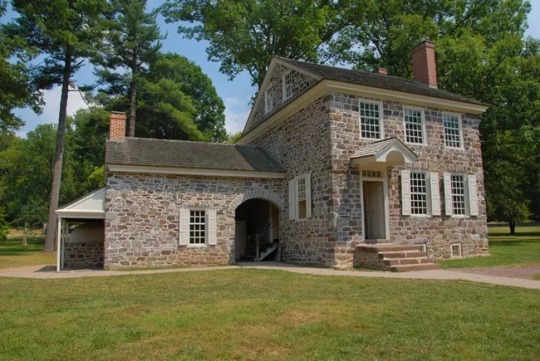
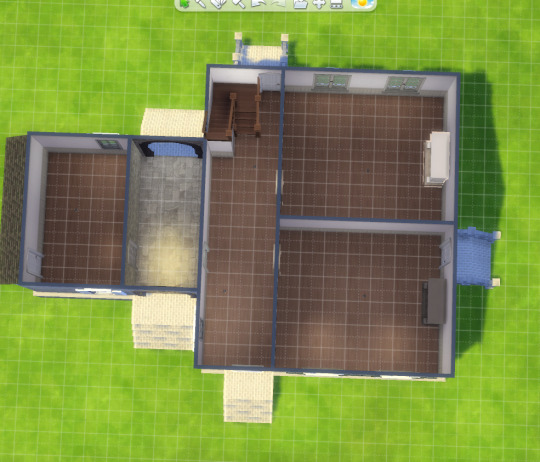
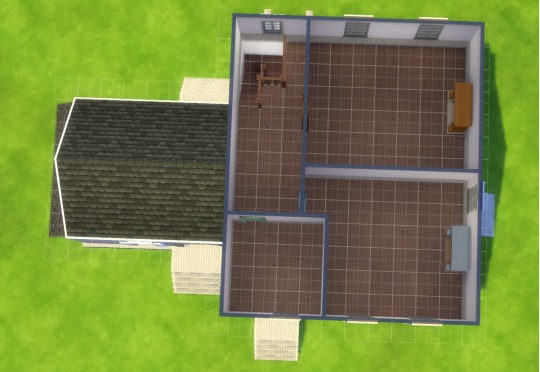

I did a thing today! I made the Isaac Potts House in the Sims 4. This was the house that was George Washington's headquarters at Valley Forge in winter of 1777-1778. I've been wanting to build it for ages and it's Gwash's birthday so I finally did. I like to think, sometimes about all the things the walls of this house saw. Hamilton and Laurens kissing, probably. Maybe more. A hundred mornings of the aides laughing. Lafayette coming to talk endlessly with Washington. The boys meeting Martha and everyone welcoming Von Steuben.
I'm actually SUPER proud of the recreation. From the front it looks really good. But pure honesty, things don't translate perfectly in the Sims. Some things you have to go "this doesn't look good in the Sims. Am I going for accuracy or prettiness or the vibes?" Or some things just don't work(More on that under the cut). (Oh and the small bedroom is the bedroom Lams shared in Duty and Inclination I know it's not official but like. Lams bedroom sharing)
This shell is CC free but does use a fair amount of packs cause I was going for accuracy. It's up on my gallery, ID Minimoon46, though. I can say Castle Estates is just for outdoor stair railings on the back and sides of the house so super easy to download without CE
Like the kitchen. If I wanted to attach it, I couldn't put it on the ground, it had to be on the same foundation level and tbh I LOVE the look of the stone archway tunnel so we had to deal with a raised kitchen and stairs. (or the entire house could've been on a platform but that would've been ASKING for bugs)
Also the windows of the Aide-de-camp's office are so off. But the other shuttered windows seem so small and I wanted to go larger windows so we lost the traditional panes and white shutters but the vibes fit better. The little hanging over the front door looked horrible so I was like nope you're not getting included. It would've needed to be an actual porch to get included.
Inside it's mostly a shell but what details are there I got from the virtual tours online. I took liberties with a wallpaper that I liked better that purely plain white walls but the floor should be decent. I gave each room a door and a fireplace of a semi accurate color(I wanted to make them uniform) in appearance. I cut the attic bedroom though.
I kinda want to furnish it but also not sure HOW. Do I furnish it like the current one? Do I just do it for fun? A regular home? A big shared study and a dining room? It would be a waste to furnish TWO studies. What about bathrooms? The kitchen would be more modern though ngl. (Would people be interested in a furnished version? Any ideas?)
There's something about this house that I just want to see in person and feel the air knowing that... they were there. Like in that tiny house, they lived and loved and were real people. And there's no place where that feeling fills me more than the IPH. Maybe one day.
#isaac potts house#amrev#valley forge#george washington#happy birthday you old guy i hope you celebrated with your dear Marqs in the afterlife if it exists#I feel like I should tag lams#screw it we've all written valley forge lams fic#lams#sims 4 historical build#idk how to tag this#like it's so vague but it's connected to so many people
22 notes
·
View notes
Text
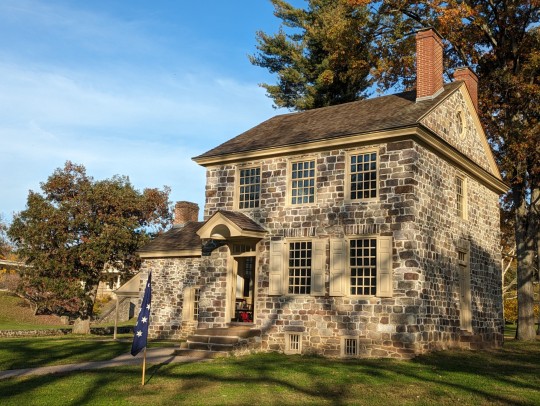

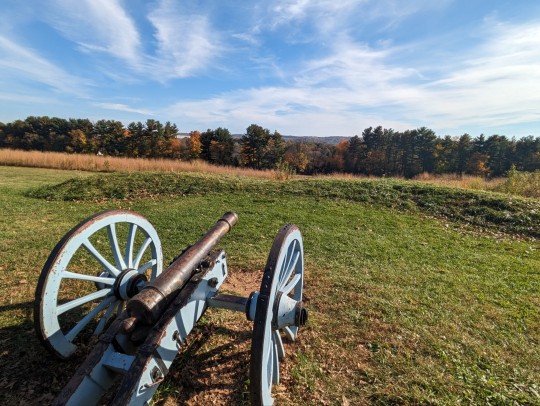
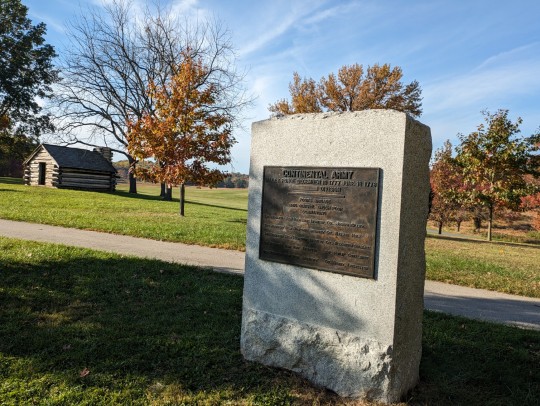

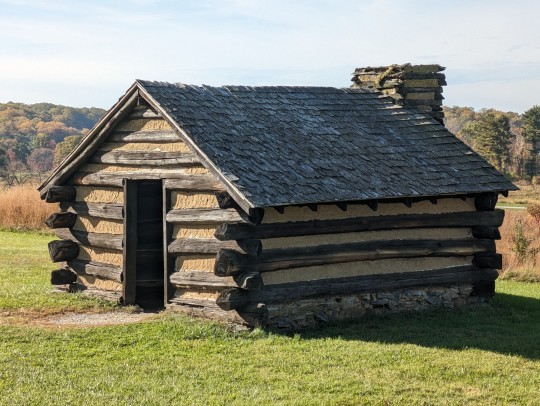
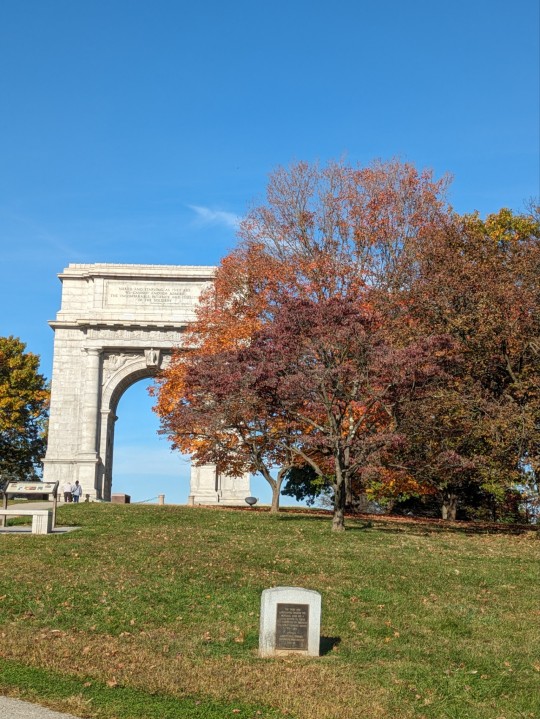
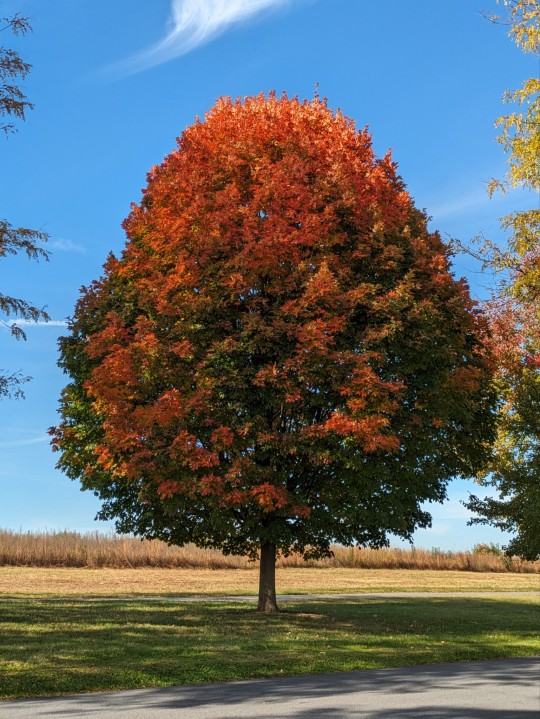


Valley Forge
10-26-23
#18th century#american revolution#george washington#valley forge#anthony wayne#philip van cortlandt#enoch poor#cannons#trees#autumn
32 notes
·
View notes
Video
This is the time you don't want to be a mouse by Kitty Kono
Via Flickr:
Red Tailed Hawk in Valley Forge
14 notes
·
View notes
Text






I run in this park at least once a week (and drive through it every day) and I never knew there was an amazing little used bookstore behind the chapel???
24 notes
·
View notes
Text
Amrev… but it’s Spongebob out of context !!
#amrev#john laurens#john andre#casimir pulaski#nathan hale#valley forge#benjamin ‘tight pants’ tallmadge#tench tilghman#robert hanson harrison#joseph reed#baron von steuben#george washington#conway cabal#thomas conway
221 notes
·
View notes
Text
"I love to build castles of happiness and pleasure in France"
One of my absolute favourite letters is this one from La Fayette to his wife Adrienne from January 6, 1778. The army has just begun the encampment at Valley Forge and La Fayette longs for his wife, children, family, friends and home after he made the decision that he, at the current moment, can not in good conscious return to France. He is in a rather bleak mood and writes this rather long letter to his wife. This letter gives great insight not only into his feelings towards his wife and children, but also concerning his relationship with Washington, the state of the Revolution and his position within. He also takes the reader along his reasoning, allowing us to have a better understanding of what words like “honour” and “duty” meant for him personally. Since the letter is longer, allow me to present you some of my favourite passages:
The passages in the brackets are the ones taken out when the letters where published in La Fayette’s Memoirs.
What a date, my dearest, and what a country to be writing from in the month of January! My destiny is strange indeed. In a camp, in the middle of the woods, fifteen hundred leagues from you, I am confined by the winter (when I should have been with you two months ago – when, my dear, all my desires and even good sense obliged me to depart.
*-*-*
Honestly, dear heart, do you think that it would not require very strong reasons to induce me to make this sacrifice? Everything tells me to depart, but honor has told me to remain (…)
*-*-*
You must be aware that it is not for my pleasure that I remain buried in this wretched place, while every possible happiness awaits me in Paris, in the midst of all my friends, and in the arms of a charming wife whom I love more than ever. If you could see for a moment what is in my heart, I would have no need of excuses; and if my feelings affect you ever so little, I dare say that you will be content with the sentiments that I express.
*-*-*
Take advantage of that to write to me, and even though your letter may well arrive long after I have left, write anyway, in case I may be so unfortunate as to be here still, to soften a bit the boredom and sorrow of my exile.)
*-*-*
You should have received by now the letter I sent to you as soon as I heard of your delivery. How happy that event has made me, dear heart! I like to mention it to you in all my letters because I enjoy thinking about it constantly. What a pleasure it will be to embrace my two poor daughters, and have them ask their mother to forgive me. You must not believe that I am so insensitive, dear heart, and at the same time so ridiculous, that the sex of our new child has diminished in the slightest my joy at her birth. We have not become so decrepit that we shall need a miracle to have another child. That one absolutely has to be a boy. For the rest, if one must worry about the family name, I declare that I have decided to live long enough to bear it myself for many years, before I am obliged to bequeath it to another being.
*-*-*
If those ladies do not understand the reasons that force me, despite myself, to remain here (from day to day), they must think me a very ridiculous person, especially since they are able to see my dear heart, that charming wife from whom I separate myself. But that same idea must impress them with a sense that (if I remain, if I sacrifice pleasure to boredom, happiness to sorrow, life in the most amiable company to the dreary life of a savage, if, in short, dear heart, I am far from you instead of being near) it is because I have overwhelming reasons for making that decision.
*-*-*
Several general officers have brought their wives to camp, and I am very envious, not of their wives (who are rather dull), but of the pleasure they have in being able to see them.
*-*-*
I love to build castles of happiness and pleasure in France. You are always a part of them, dear heart, and once we are reunited nothing will separate us again and prevent us from enjoying together both the sweetness of loving each other and the most delightful and tranquil felicity. Farewell, my heart, I truly wish that that arrangement could begin today.
*-*-*
Farewell, farewell, my very dear heart, love me always, and never forget for a moment the unhappy exile who thinks always of you with a new tenderness.
Idzerda Stanley J. et al., editors, Lafayette in the Age of the American Revolution: Selected Letters and Papers, 1776–1790, Volume 1, December 7, 1776–March 30, 1778, Cornell University Press, 1977, pp. 222-226.
#marquis de lafayette#la fayette#french history#american history#american revolution#history#letter#adrienne de la fayette#adrienne de noailles#george washington#valley forge#1778#anastasie de la fayette
24 notes
·
View notes
Text

Valley Forge, Pennsylvania
July, 2022
#photographers on tumblr#lensblr#original photographers#imiging#luxlit#photography#Valley Forge#Pennsylvania
16 notes
·
View notes
Text
Excerpt of Expenses from Hamilton and Caleb Gibbs‘ Trip to Albany from Valley Forge
[Valley Forge, January 20, 1778]
“Account of Expences of. Colo. Hamilton. & Captain Gibbs. to Albany & back again—set off from Skippack road, 15. miles from Phila: Returnd. to Valley Forge—
Sent by His Excelly. Genel. Washington on public service...
Novr— 1— at Chester.— 1. 17.4—2d at N. Windsor ferry 8/6 2. 5.10
4 at Paukeepsey— 19/ —at Rhynbeck— 25/6. 2. 4. 6
5th. at Clauverick— 16/8.—gave a guide—9/ 1. 5. 8.
at Kinderhook— 16/ —at Albany ferry 6/. 1. 2—
8th. at Cosockett2 19/6—at Wells’s ferry—5/. 1. 4. 6
at Pools landing 24/6—9th on the road to Clauvierck 10/ 1.14. 6
10th. at Clauverick— 14/ —at Tatias tavern dinner &c. 12/ 1. 6.
11th. at the flats 18/6 —at paukeepsey 10/6 1. 9—
12th. at Fish Kill— 30/ —at New Windsor ferry 10/. 2.—
14th. at Goshen— 20/—at Chester—27/. 2. 7—
16th. at Pompton— 14/ 14. £19. 5. 0
On the road to PeeksKill when Colo. Hamilton was taken sick from Morris Town 22d. at Ramapaugh 13/ —at Cacaat3—16/8 1. 9. 8.
23 at Kings ferry— 11/ —gave the ferry man 5/. .16—
Cash paid at Peeks Kill when Colo. Hamilton was sick
25th. to 3 quarters mutton @8/24 gave the doctr. 6/ 1.10—”
-This was the journey back to Valley Forge from Albany, where Hamilton may have first met Eliza. He certainly spoke with Philip Schuyler while he was there. Hamilton became severely ill on the return trip, as can be seen in the entries for November 22d through November 25th.
Source: Founders Online
20 notes
·
View notes
Note
hai i got an amrev book recently about and called Valley Forge by Bob Drury and Tom Clavin and was wondering if you had ever heard of it/knew anything about its reliability? i'm not very far in (one chapter lolz) but have already noticed some loose mistakes (calling la fayette an aide) so i was curious if that was anything you knew about
i have never heard of it! i did a little research and people are saying its very long and detailed and that can be kinda boring. also there are historical inaccuracies and some statements made without sources. these are the same issues i had with ron chernow, so id say take it with a grain of salt, check the index periodically for sources, and just sharpen your critical thinking skills, but i say that for almost all history books. but do let me know how you like it bc if its worth it i’ll get it!
12 notes
·
View notes
Text

The Prayer at Valley Forge depicts George Washington kneeling in prayer beside his horse, seeking guidance during a moment of despair. Painted by Arnold Friberg in 1975.
9 notes
·
View notes
Photo

The Vietnam Veterans Against the War rally at Valley Forge National Park, Pennsylvania, September 7, 1970. Photo by Leif Skoogfors.
63 notes
·
View notes